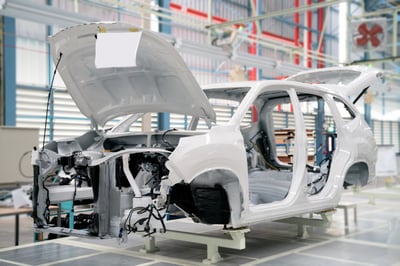 The Lean and Six Sigma business methodologies have deep roots in the automotive manufacturing sector. One of the reasons they are so popular in the auto industry is that they bring a set of techniques and tools designed to help organizations achieve continuous improvement and a seamless flow of value to the customer.
The Lean and Six Sigma business methodologies have deep roots in the automotive manufacturing sector. One of the reasons they are so popular in the auto industry is that they bring a set of techniques and tools designed to help organizations achieve continuous improvement and a seamless flow of value to the customer.
Fortunately for today's auto manufacturers, software is available to support Lean Six Sigma efforts and streamline the road to improvement and waste reduction. The best Lean Six Sigma software solutions for automobile manufacturers and suppliers have features to enhance multiple Lean Six Sigma techniques in a single platform that becomes the repository for all improvement knowledge and work.
Here are seven popular auto industry Lean Six Sigma tools that can be better supported by software.
PDSA and DMAIC
PDSA (Plan, Do, Study, Act) and DMAIC (Define, Measure, Analyze, Improve, Control) are two typical improvement cycles. DMAIC is most often used with very structured processes that produce measurable outputs that can be tightly controlled. PDSA is less dependent on data inputs and can be applied to any process that needs improvement. Continuous improvement software makes it easier to document each step of either cycle. The best solutions include alerts and notifications to let workers know when something needs to be done. The software also measures the results of either improvement cycle over the short and long-run.
Standard Work
Standard Work is a bedrock Lean Six Sigma concept. For there to be an improvement, there must be a baseline set of best practices for each operation that is applied every time until the process is targeted for improvement. Software supports Standard Work in multiple ways. Developing the Standard is logged as an improvement, ensuring that the right people are involved and engaged. The platform serves as a repository for the current Standard, so process operators know exactly how to find it when needed. The Standard is available for improvement when the cycle begins again.
Catchball
The Lean technique of Catchball involves tossing ideas back-and-forth and up-and-down between people to get ideas and feedback until a consensus is reached. Using email for Catchball is tempting but not ideal. It is common for messages to get missed and essential information to be lost under other unrelated work. A better approach is to use a software platform designed for precisely this type of collaboration. The entire thread about a process, improvement, or opportunity is all in one place and accessible at any time.
Daily Huddle Meetings
Daily huddle meetings (or shift huddle meetings) are a common sight in automotive manufacturing organizations. Everyone gathers around a physical huddle board to discuss improvement projects and address any challenges. Because so much of the work is done in a physical location, the factory floor, in-person huddle meetings make sense for many automotive workers. However, there is a significant advantage in using a digital huddle board rather than a physical one. The digital system captures the history of each opportunity for improvement. This contributes to the organization's overall knowledge, helps speed the pace of change, and eliminates barriers to engagement. In addition, leaders can see the huddle boards from every functional area all in one place.
Gemba Walks
During a Gemba walk, managers go to the place where work is done to show respect for the workers and look for improvement opportunities. Changes aren't made during the walk, only after thoughtful analysis, often resulting in a PDSA or DMAIC cycle. Lean Six Sigma software is the repository for each improvement that is considered. After a project is started, the workflow for implementation occurs within the system. It is also an ideal solution for storing photos, illustrations, or other documents associated with the Gemba walk.
Hoshin Kanri
Hoshin Kanri is a strategy development and planning tool that involves identifying several breakthrough objectives that can be achieved in 3-5 years. Strategies, tactics, and assignments are crafted to ensure the success of each objective. Software helps Hoshin Kanri management in manufacturing by aligning each individual's goals with its strategy, whether they work in the executive office or the assembly line.
Kanban
Kanban is the Lean Six Sigma tool for visualizing workflow to make any interruptions or backlogs in a work process immediately apparent and reduce the need for excess inventory. Visualizing the movement of work from one part of the process to another helps team members act quickly when the value stream is blocked. Lean Six Sigma software lets users create digital Kanban boards so that the current state of any process or project is straightforward and, if necessary, corrective action can be taken.
Software will not solve every continuous improvement challenge for automotive manufacturers, and it is not a replacement for a culture that elevates the search for perfection. It is a powerful way to increase the effectiveness of every Lean Six Sigma manufacturing tool that you use. You'll experience improvement projects that get finished faster, and you'll see more of them with measurable results. That's a win for everyone.
![[Watch Now] The Why, How, and What of Continuous Improvement](https://no-cache.hubspot.com/cta/default/326641/060c8cc9-44ad-4fd1-ad7b-7b4ab71c7632.png)



Add a Comment